Have you ever wondered, why do dogs have wet noses? This intriguing question sparks curiosity among dog lovers and pet owners alike. A dog’s nose isn’t just for show; it’s a fascinating feature that serves several important purposes. Dogs’ noses are moist for a reason, and understanding this can deepen your bond with your furry friend. But what exactly does a wet nose mean? Is it a sign of health or something else? In this article, we will unravel the mystery behind dogs’ wet noses, exploring the science and intriguing facts that surround this unique characteristic. You might be surprised to learn that a wet nose can enhance a dog’s sense of smell, making it an essential tool for their survival and communication. Moreover, we’ll delve into how temperature regulation plays a role in this phenomenon, and what it signifies about your pet’s well-being. So, if you’re curious about the benefits of a wet nose and what it says about your dog’s health, keep reading! Discover the fascinating reasons why your pup’s nose might be a little damp and how it connects to their extraordinary abilities.
Unveiling the Mystery: Why Do Dogs Have Wet Noses? 5 Fascinating Facts You Need to Know
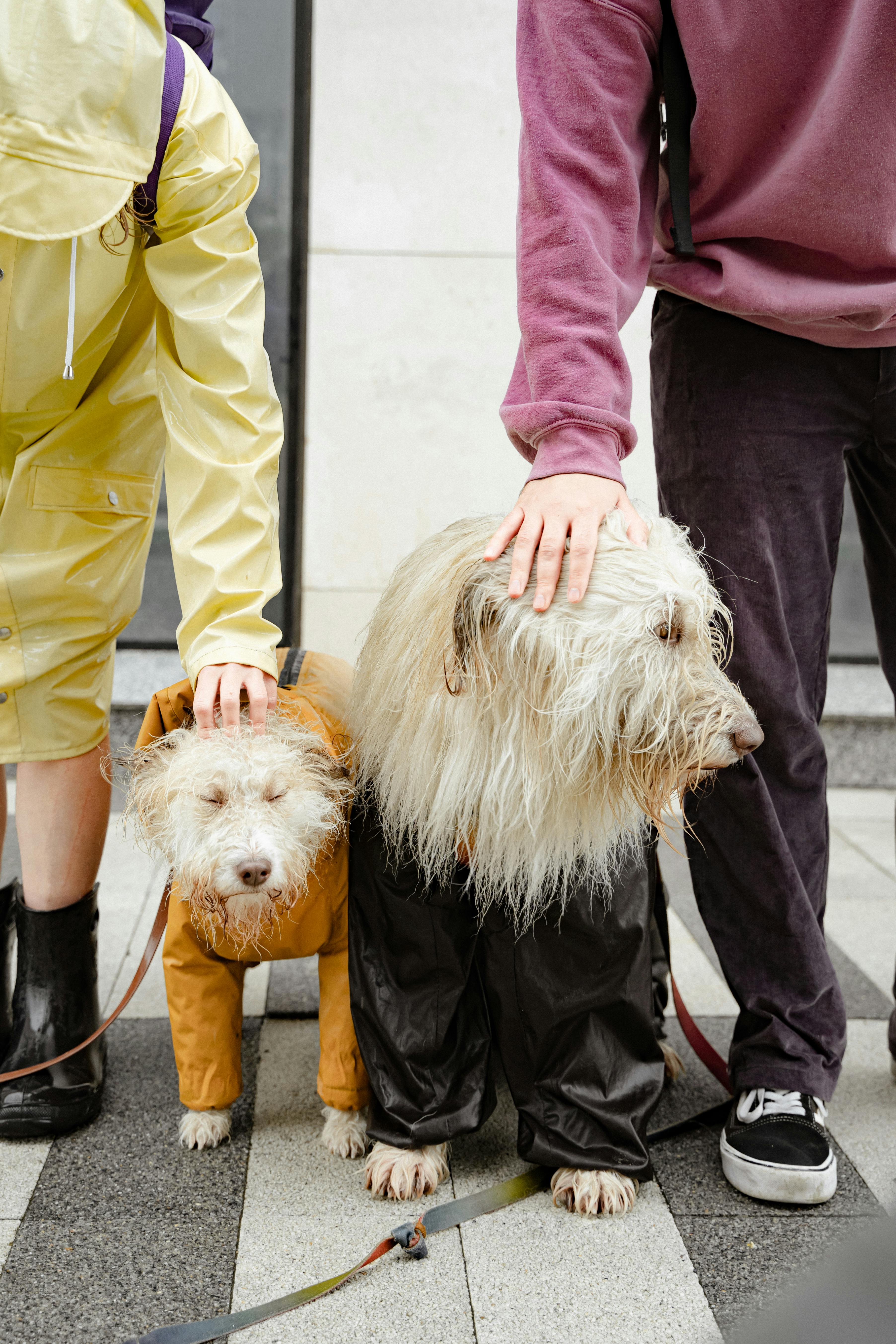
Dogs are often called man’s best friend, but have you ever wondered why their noses are wet? This is a question that sparks curiosity among dog owners and animal lovers alike. The truth is, there are several fascinating reasons behind this common canine trait. Let’s dive into the mystery of why do dogs have wet noses and uncover five intriguing facts you probably didn’t know.
1. Nature’s Thermometer
One of the most interesting reasons why do dogs have wet noses is because it helps to regulate their body temperature. Just like humans sweat to cool down, dogs use their noses to help them stay cool. The moisture on a dog’s nose evaporates, which in turn cools down the blood flow in the area. This is particularly important since dogs don’t sweat through their skin like humans do. Instead, they primarily rely on panting and their wet noses to manage their body heat.
2. Superior Sense of Smell
Did you know that dogs have an incredible sense of smell? A dog’s olfactory system is far more complex than ours. Their noses are not just for looking cute; they serve an essential purpose. The wetness of a dog’s nose helps to trap scent particles. When a dog sniffs, moisture on their nose captures these tiny scent particles, enhancing their ability to smell. This ability is so advanced that dogs can detect certain odors at parts per trillion. Here is a quick comparison of a dog’s sense of smell to a human’s:
- Humans: About 5 million scent receptors
- Dogs: Up to 300 million scent receptors
This means that dogs can detect smells that are imperceptible to us, making them exceptional at tasks like search and rescue or detecting diseases.
3. Communication Tool
Dogs are social animals, and their wet noses also play a role in communication. When dogs greet each other, they often sniff each other’s noses and bodies. The moisture on their noses can carry pheromones and other chemical signals, which helps them gather information about the other dog. This can include details about their health, mood, and even their reproductive status. So, next time your dog sniffs another dog, remember that they are simply trying to gather information, much like we do with conversation.
4. Health Indicator
A dog’s nose can also be an indicator of their health. A wet, cool nose generally means a dog is healthy and well-hydrated, while a dry or warm nose can signal potential health issues. However, it’s important to note that a dry nose doesn’t always mean a dog is sick. Factors like weather, activity level, and even sleep can affect the moisture level of a dog’s nose. Here are some common nose-related signs to watch for:
- Wet and cool: Healthy
- Dry and warm: Could indicate fever or dehydration
- Cracked or bleeding: May suggest a need for veterinary care
5. Evolutionary Adaptation
Lastly, the wet nose of a dog is an evolutionary adaptation. Early canines likely developed moist noses to improve their hunting and survival skills. The ability to smell better not only aided in finding food but also in detecting predators or danger. Over time, this trait has been passed down through generations, and wet noses became a hallmark of canines everywhere.
Fun Fact List
- The average dog can identify smells 40 times better than a human.
- Dogs have a specialized organ called the Jacobsen’s organ, enhancing their sense of smell.
- Some breeds, like Bloodhounds, have an extraordinary ability to track scents over long distances.
- Dogs can also differentiate between human emotions based on scent.
- A wet nose can help dogs interact with their environment, making it easier for them to explore the world around them.
As you can see, the wet nose of a dog is more than just a cute feature. It serves multiple purposes, from temperature regulation to enhancing their communication and sense of smell. Next time you see a pup with a shiny, wet nose, you’ll know that it’s not just for show. It’s a fascinating aspect of their biology that plays a crucial role in their daily lives. Understanding why do dogs have wet noses not only enriches our knowledge but also strengthens the bond we share with our furry companions. So, cherish those wet-nosed greetings; they are a window into the intriguing world of dogs!
The Science Behind Wet Noses: How Your Dog’s Unique Physiology Impacts Their Health
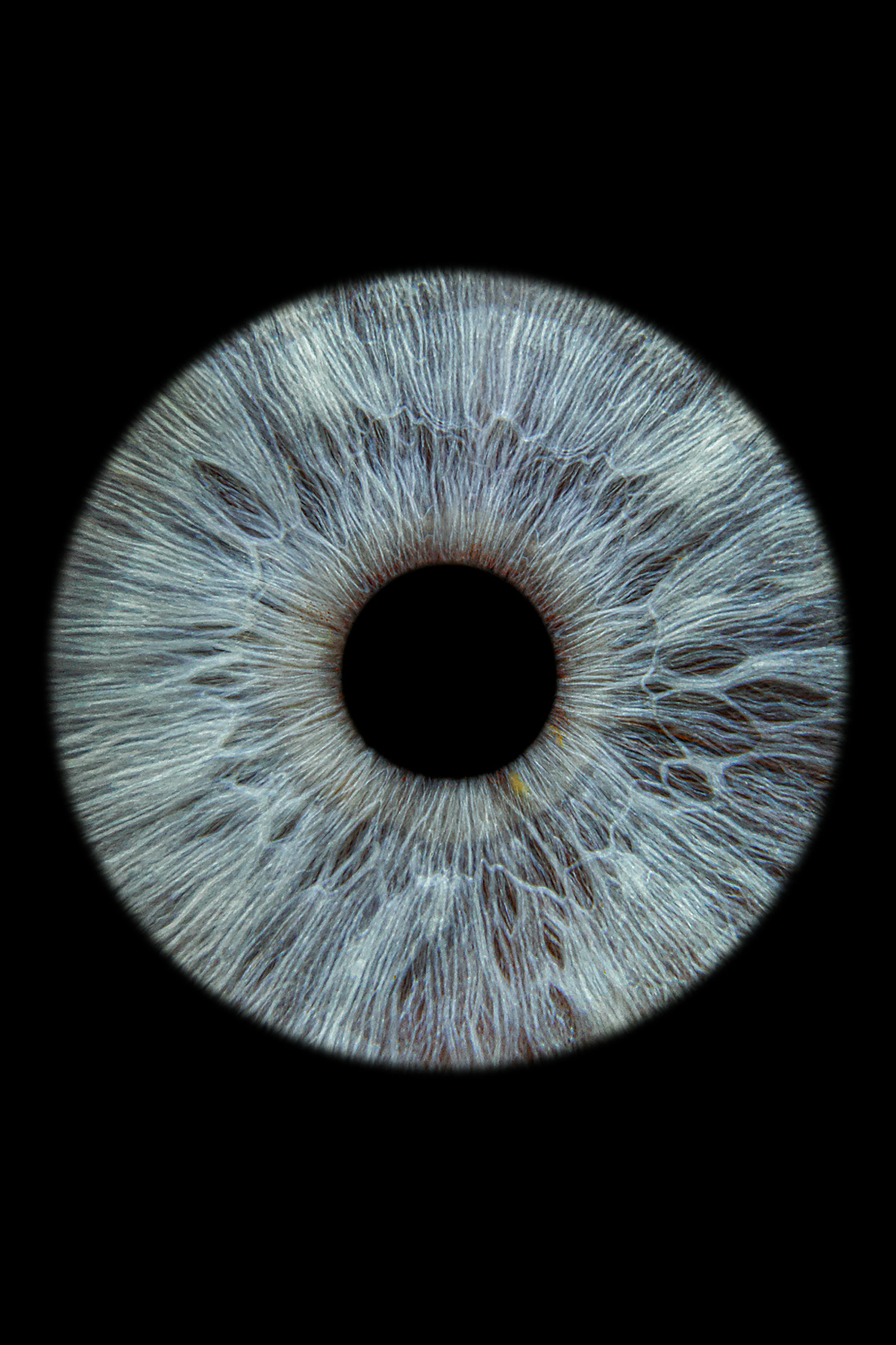
Have you ever wondered why your dog’s nose is often wet? Many pet owners notice how their furry friends have distinctly moist noses, and it turns out there’s a fascinating science behind it. Understanding the reasons for this unique characteristic can help you care better for your canine companion. In this article, we will explore the science behind wet noses, how it relates to your dog’s health, and why do dogs have wet noses in the first place.
The Physiology of Dog Noses
Dog noses are not just cute; they’re incredibly complex. The surface area of a dog’s nose is covered with a special type of skin that contains a high concentration of scent receptors. This unique physiology helps dogs to smell things that humans can’t even begin to detect.
- Dogs have about 220 million scent receptors, while humans have only about 5 million.
- The wetness of the nose helps enhance their sense of smell by trapping scent particles.
- A dog’s nose is also cooler than their body temperature, which may help them better process scents.
This combination of factors makes a dog’s nose a vital tool in their perception of the world.
Why Are Dog Noses Wet?
So, why do dogs have wet noses? Here’s a list of reasons that contribute to this phenomenon:
Thermoregulation: A wet nose can help dogs regulate their body temperature. Dogs don’t sweat the way humans do; instead, they cool down through panting and by having a moist nose.
Scent Detection: The moisture on a dog’s nose helps capture scent particles, improving their olfactory abilities. The wet surface can absorb more of these particles, providing a clearer scent trail.
Health Indicator: A moist nose is often seen as a sign of good health. However, this isn’t a strict rule. Changes in nose moisture can indicate health issues, like dehydration or fever.
Behavioral Aspects: Dogs often wet their noses by licking them. This behavior can be linked to their communication and social interaction with other dogs and humans.
The Historical Context of Dog Noses
Historically, dogs have been companions to humans for thousands of years. The unique characteristics of their noses have made them invaluable in various roles, such as hunting, herding, and even search and rescue. The evolution of the dog’s sense of smell has been shaped by their interactions with humans and the environments they live in.
- Ancient cultures recognized the special abilities of dogs and used them for tracking and hunting.
- Over time, selective breeding has enhanced their olfactory capabilities, leading to breeds like Bloodhounds and Beagles who are known for their remarkable scenting skills.
Health Implications of a Dog’s Nose
Understanding your dog’s nose can also provide insight into their overall health. Here’s a quick reference list of what different nose conditions might indicate:
- Cold, Wet Nose: Generally a sign of a healthy dog.
- Warm, Dry Nose: This could indicate fever, dehydration, or illness.
- Cracked or Bleeding Nose: May point to allergies, infections, or environmental irritants.
It’s important for dog owners to regularly check their pet’s noses and other health indicators. Regular vet check-ups can also help monitor any changes that might be concerning.
Fun Facts About Dog Noses
Here are some fun and interesting facts about dog noses that you might not have known:
- Dogs’ nose prints are as unique as human fingerprints.
- Some breeds have more pronounced wet noses than others, like Retrievers or Spaniels.
- Dogs can even detect certain diseases in humans, including cancer and diabetes, through their sense of smell.
How to Care for Your Dog’s Nose
Taking care of your dog’s nose is simple yet crucial. Here are some basic tips:
- Hydration: Make sure your dog is drinking enough water.
- Check for Injuries: Look for cuts or irritations, especially if your dog spends a lot of time outdoors.
- Keep it Clean: Wipe off any dirt or debris with a damp cloth.
Understanding the science behind wet noses not only enhances your appreciation for your pet but also helps you take better care of them. So the next time you pet your dog and feel that cool, wet nose, remember the incredible biology at work. Dogs truly are amazing creatures with fascinating features that benefit their health and well-being.
Do Wet Noses Mean a Healthy Dog? Understanding Your Pet’s Nose and Its Significance

Dogs are known as man’s best friend, and one of the most endearing features of our furry companions is their wet noses. Many pet owners often wonders, “Do wet noses mean a healthy dog?” This article explore the significance of a dog’s nose, why it’s wet, and what it might say about their overall health.
Why Do Dogs Have Wet Noses?
Dog noses are not just cute; they serve important functions. Wet noses have several fascinating reasons behind them.
- Temperature Regulation: Dogs can’t sweat like humans do. Their primary way of cooling down is through panting. A wet nose can help in regulating body temperature by evaporating moisture.
- Enhanced Smell: A wet surface can capture scent particles more effectively, making it easier for dogs to smell things. A dog’s sense of smell is far superior to that of humans, and a moist nose enhances this ability.
- Health Indicator: While a wet nose doesn’t always equal good health, it can be a sign of hydration and overall well-being. Sick dogs might have dry noses, but other symptoms should be considered too.
The Science Behind Wet Noses
A dog’s nose is covered in a thin layer of mucous that keeps it moist. This mucous not only helps with smell but also serves to filter out dust and particles. Here’s how dog noses differ from human noses:
| Feature | Dogs | Humans |
|---|---|---|
| Smell Sensitivity | 10,000 to 100,000 times more sensitive | Less sensitive |
| Nose Temperature | Wet and cool | Typically dry and warm |
| Moisture Function | Enhances scent detection | Limited scent detection |
Common Misconceptions About Wet Noses
It is a common myth that a wet nose is always an indicator of health. While it can be, there are exceptions. Here are some misconceptions:
Myth: A dog with a dry nose is sick.
- Reality: A dog’s nose can dry out for various reasons, including weather conditions or simply being asleep.
Myth: All dogs have wet noses.
- Reality: Some breeds may have drier noses than others based on their genetics.
Myth: A wet nose means the dog is happy.
- Reality: A wet nose doesn’t necessarily equate to happiness; it could just mean they’ve been drinking water or playing outside.
What a Healthy Dog Nose Looks Like
So, what should you look for in a healthy dog nose? Here are some characteristics:
- Moisture: A healthy nose may feel slightly moist but not overly wet.
- Temperature: It should feel cool to the touch but not cold.
- Color: The color can vary by breed, but it should generally be consistent, without cracks or sores.
- Texture: A healthy nose is smooth, not crusty or flaky.
Signs of Potential Health Issues
If your dog’s nose suddenly becomes dry, hot, or excessively crusty, it might indicate a health problem. Consider these signs:
- Loss of Appetite: If your dog is not eating as usual, this could be a signal.
- Lethargy: A noticeable drop in energy levels is concerning.
- Vomiting or Diarrhea: These symptoms can indicate illness.
- Nasal Discharge: Mucus or blood from the nose should be examined by a vet.
Practical Tips for Dog Owners
Maintaining a dog’s health involves more than just checking their noses. Here are some tips:
- Regular Vet Check-ups: Annual visits can help catch potential health issues early.
- Hydration: Ensure your dog has access to fresh water at all times.
- Diet: A balanced diet contributes to overall health, including skin and nose condition.
- Grooming: Regular grooming helps to keep your dog’s skin and nose healthy.
In summary, while a wet nose can be a good indicator of a dog’s health, it’s not the only factor to consider. Understanding your pet’s nose and its significance is important for their overall well-being. Keep these insights in mind to better care for your furry friend and ensure they lead a happy, healthy life. Remember, regular vet visits and attention to your dog’s behavior are key to keeping them in tip-top shape!
From Temperature Regulation to Scent Detection: 7 Reasons Why Dogs Have Wet Noses
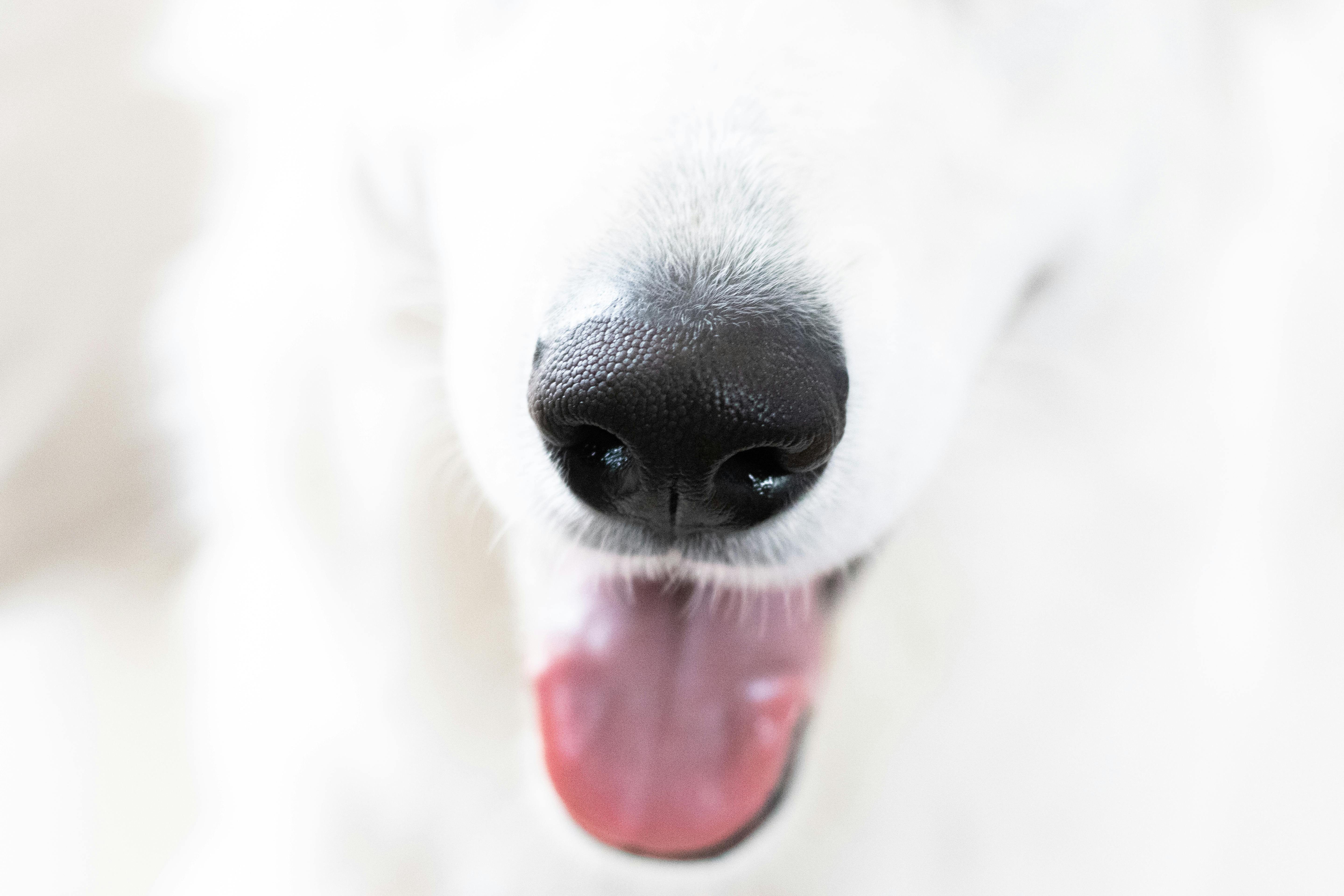
Dogs are known for their playful nature, loyal companionship, and, of course, their wet noses. Many people wonder, “Why do dogs have wet noses?” Well, there’s actually a bunch of reasons behind this curious trait. Let’s dive into seven fascinating reasons that explain why our furry friends have those moist noses.
1. Temperature Regulation
One of the main reasons dog noses are wet is for temperature regulation. Dogs don’t sweat like humans do. Instead, they cool themselves down through panting and having wet noses. The moisture on their noses evaporates, which helps them stay cool, especially on hot days. If you ever notice your dog’s nose getting dry, it might be a sign they are overheating or stressed.
2. Enhanced Sense of Smell
Dogs are known to have incredible olfactory capabilities, and their wet noses play a key role in this. The wetness helps to trap scent particles, making it easier for dogs to detect smells in their environment. A dog’s sense of smell is estimated to be between 10,000 to 100,000 times more sensitive than a human’s. That wet nose is actually a tool for gathering scents!
3. Communication Tool
Dogs use their noses to communicate with each other and with humans. When they sniff each other, they are gathering information about other dogs, including their health, diet, and emotional state. A dog’s wet nose can also indicate excitement or nervousness. If you ever see your dog nudging you with their damp nose, they might be trying to tell you something important!
4. Natural Cleaning Mechanism
A wet nose can also be seen as a natural cleaning mechanism. Dogs often lick their noses to keep them clean and to remove dirt or bacteria. This behavior is instinctual, ensuring that their noses remain clear for effective scent detection.
5. Hydration Indicator
The moisture level in a dog’s nose can indicate their hydration level. A well-hydrated dog usually has a moist nose, while a dry nose can signal dehydration or illness. If you notice your dog’s nose is consistently dry or cracked, it might be worth consulting a veterinarian to check on their health.
6. Evolutionary Adaptation
Historically, dogs’ wet noses have evolved as a survival trait. In the wild, a wet nose helps dogs hunt and find food. The ability to detect scents accurately would have been crucial for their ancestors to catch prey or avoid predators. This evolutionary adaptation has carried over to our domesticated pets today.
7. Temperature and Environment Influence
The environment and temperature can greatly affect the moisture of a dog’s nose. For instance, during colder months, you might notice your dog’s nose getting drier. This happens because the air is less humid. Conversely, in humid weather, their noses tend to stay wetter. Changes in weather can affect their nose moisture, which is completely normal.
Quick Facts About Dog Noses:
- Dogs have about 300 million smell receptors, compared to humans’ 5 million.
- A dog’s wet nose can absorb scent molecules better than a dry one.
- Certain breeds have wetter noses than others, such as Bloodhounds.
- A dog’s sense of smell can be trained for various tasks, including search and rescue.
Comparison of Dog Nose Moisture by Breed
| Breed | Average Nose Moisture | Notable Traits |
|---|---|---|
| Labrador | High | Friendly and outgoing |
| Beagle | Moderate | Curious and great scent trackers |
| Bulldog | Low | Calm and protective |
| Dachshund | Moderate | Energetic and playful |
| Greyhound | Variable | Fast and elegant |
So next time when you wonder, “Why do dogs have wet noses?” just remember that it’s a fascinating blend of biology, communication, and adaptation. The moisture on their noses isn’t just a quirky feature; it’s essential for their health, hunting, and everyday interactions. If you see your dog licking their nose or nudging you with it, they are not just being cute but also using an important tool in their daily life. Understanding these reasons can help you better connect with your furry companion and appreciate the unique characteristics that make dogs such wonderful pets.
Is Your Dog’s Nose Too Dry? 4 Signs of Potential Health Issues You Shouldn’t Ignore

Is your dog’s nose too dry? This question can cause a lot of concern for pet owners. A dog’s nose is often a good indicator of their health, so noticing changes can raise some alarms. While a dry nose might not always mean something serious, there are certain signs you definitely shouldn’t ignore. Let’s explore four signs that could indicate potential health issues in your furry friend.
1. Excessive Dryness and Cracking
If your dog’s nose is not just dry but also showing cracks, that’s a red flag. A healthy dog’s nose usually feels moist and slightly cold to the touch. If you notice:
- Cracks or fissures
- The skin looking flaky or peeling
- The nose feeling warm
These could indicate dehydration or an underlying issue like a skin infection. If your dog is experiencing these symptoms, it’s best to consult your veterinarian as soon as possible.
2. Change in Color
Another sign to look for is a change in the color of your dog’s nose. A healthy nose is typically black or brown, depending on the breed. However, if you notice:
- A sudden lightening of color
- Redness or swelling
- Development of sores or lesions
This could suggest skin problems or even autoimmune conditions, which require prompt veterinary care. Don’t wait too long to get this checked out.
3. Behavioral Changes
Sometimes, the health of your dog can be reflected in their behavior. If your pup seems more lethargic than usual, this can be a sign that something is off. Look for:
- Decreased appetite or drinking less water
- Unusual irritability or withdrawal
- Signs of discomfort
These changes could be linked to underlying health issues that need immediate attention. Dogs can’t tell us how they feel, so observant owners are key.
4. Nasal Discharge
If you see any discharge coming from your dog’s nose, that’s often not a good sign. A healthy nose might have a little moisture but should not have mucus or crusty discharge. Pay attention to:
- Color of the discharge (clear, yellow, green)
- Consistency (thin or thick)
- Frequency of discharge
A persistent nasal discharge can indicate allergies, infections, or even more serious conditions, and it should be evaluated by a vet.
Why Do Dogs Have Wet Noses? Discover The Fascinating Reasons!
Now that we’ve covered signs to watch for regarding a dry nose, let’s delve into the reason why dogs generally have wet noses. You might be surprised by the science behind it!
1. Thermoregulation
One primary reason for a dog’s wet nose is thermoregulation. When dogs get hot, they can’t sweat like we do. Instead, they rely on their noses to help cool down. The moisture on their noses evaporates, which helps to lower their body temperature.
2. Enhanced Sense of Smell
Dogs have an incredible sense of smell, and a wet nose helps to enhance this ability. The moisture on their nose helps to capture scent particles in the air, which can then be processed more efficiently by their olfactory receptors. This is why dogs can sniff out things we can’t even imagine.
3. Natural Moisturizer
A wet nose acts as a natural moisturizer. Just like we need moisture for our skin, dogs do too. The moisture helps to keep the sensitive skin around their nose healthy and prevents it from drying out.
4. Communication Tool
A dog’s wet nose can also serve as a form of communication. When they nuzzle or lick, they might be trying to express affection or curiosity. It’s a way for them to interact with their environment and with us!
Summary of Key Points
- A dry nose can be an indicator of several health issues.
- Watch for signs like excessive dryness, color changes, behavioral shifts, and unusual discharge.
- Dogs have wet noses for reasons like thermoregulation, enhanced smell, natural moisture retention, and communication.
So, if you ever ask yourself, “Is my dog’s nose too dry?” remember to observe these crucial signs and understand the fascinating reasons behind why their noses are typically wet. Your vigilance can play an important role in ensuring your furry friend stays healthy and happy. Always consult with a veterinarian if you suspect any health issues; it’s better to be safe than sorry!
Exploring the Connection: How a Dog’s Wet Nose Affects Their Sense of Smell
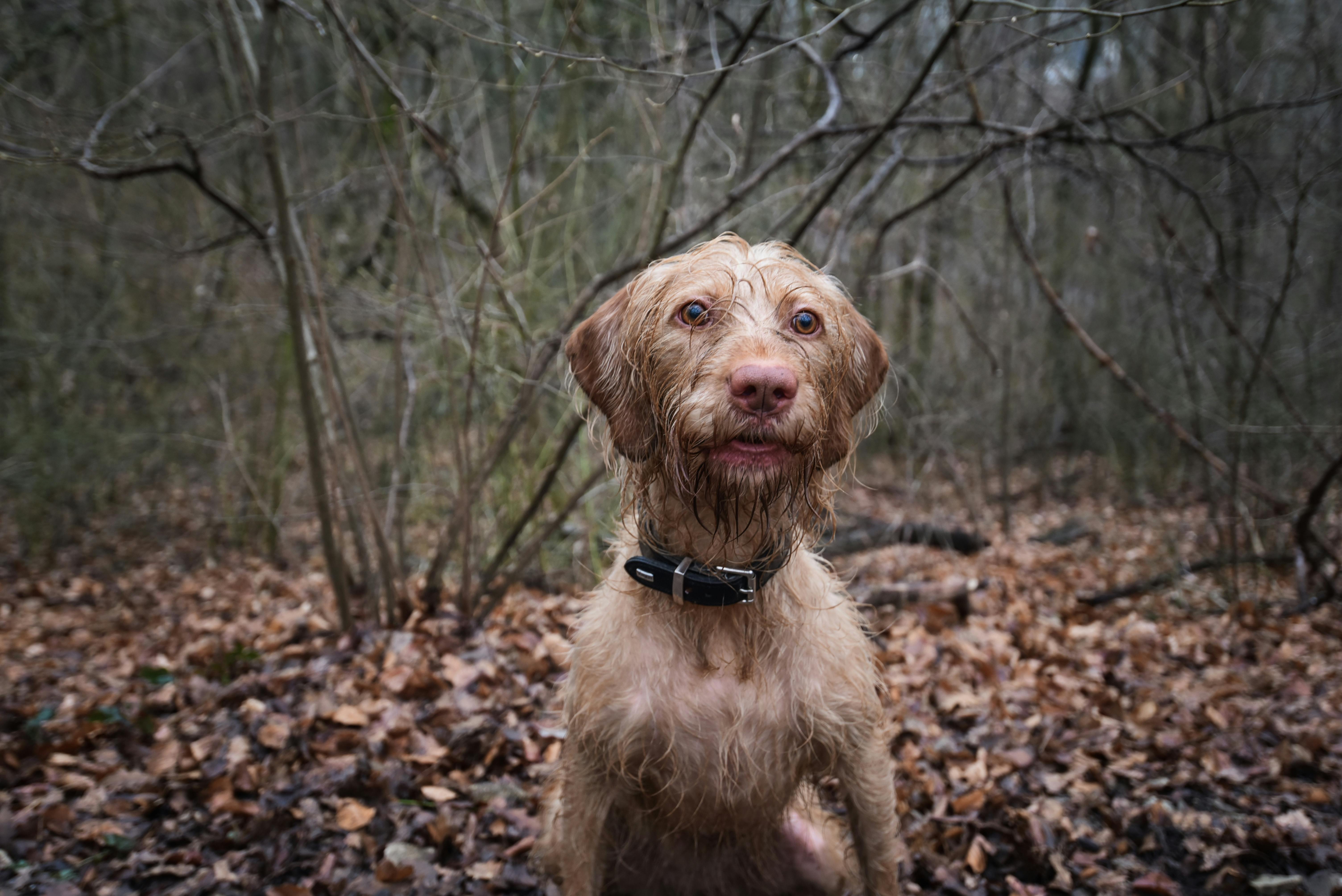
Dogs are more than just pets; they are companions, protectors, and family members. One of the most interesting things about dogs is their extraordinary sense of smell. A significant aspect of this remarkable olfactory capability is their wet noses. Ever wonder why do dogs have wet noses? Let’s dive into the fascinating details about how a dog’s wet nose influences their sense of smell, and explore some scientific insights that may surprise you.
The Biology Behind a Dog’s Wet Nose
Dogs have wet noses for a variety of biological reasons. The moisture on their noses plays a crucial role in enhancing their ability to smell. Here are some key points to consider:
Moisture Absorption: Wet noses help absorb scent molecules from the air. When a dog inhales, the moisture on their nose captures tiny scent particles, making it easier for them to identify different smells.
Temperature Regulation: A dog’s wet nose also helps in regulating their body temperature. Dogs do not sweat like humans do; instead, they cool themselves through their noses and panting.
Health Indicator: A wet nose is often a sign of a healthy dog. If a dog’s nose becomes dry, it may indicate illness or dehydration.
The Connection Between Wet Noses and Smell
So, how does a wet nose really impact a dog’s sense of smell? It’s all about the science of olfaction. Dogs have approximately 220 million scent receptors in their noses compared to a human’s mere 5 million. This vast number allows them to detect scents at incredibly low concentrations. The wetness of their noses enhances this ability significantly.
Increased Surface Area: The moist surface area of a dog’s nose increases the likelihood of scent particles sticking, which enhances their ability to detect smells.
Chemical Detection: Many scents are carried in the air with moisture. A wet nose acts like a sponge, soaking in these chemical signals and helping dogs process them more effectively.
Why Are Dog Noses Wet?
There are several reasons why dogs may have wet noses, and understanding these can deepen your appreciation for your furry friend. Here’s a breakdown:
Glandular Secretion: Dogs have specialized glands in their noses that secrete a thin layer of mucus. This mucus keeps the nose moist and helps with scent absorption.
Licking Behavior: Dogs often lick their noses to keep them moist. This behavior is instinctual and helps maintain optimal smell functionality.
Environmental Factors: Weather and humidity can also affect the wetness of a dog’s nose. For instance, a dog might have a wetter nose in humid conditions compared to dry weather.
Fascinating Facts About Dog Smell
Did you know that dogs can recognize their owner’s scent even after a long time apart? Here are some other amazing facts about a dog’s sense of smell:
Scent Discrimination: Dogs can distinguish between different odors, which is why they are often used in search-and-rescue missions, bomb detection, and medical alert services.
Scent Memory: Dogs have an impressive scent memory, allowing them to remember specific smells for a long time. This is why dogs can find their way back home from great distances.
Health Diagnosis: Some dogs can even detect certain diseases, such as cancer or diabetes, through their sense of smell. This unique ability is being explored in various medical fields.
The Importance of a Healthy Nose
To keep your dog’s nose healthy and wet, consider the following tips:
Hydration: Ensure your dog has access to clean and fresh water at all times. Dehydration can lead to a dry nose.
Regular Checkups: Routine veterinary visits can help monitor your dog’s health, including the condition of their nose.
Environmental Care: Protect your dog from extreme weather. Cold and dry air can lead to chapped noses.
Remember, while a wet nose is a good sign, it’s not the only indicator of your dog’s health. Always keep an eye on their overall behavior and well-being.
Dogs are incredible creatures with complex biological mechanisms that enhance their senses. Their wet noses are more than just a cute feature; they serve vital functions that contribute to their remarkable olfactory abilities. Understanding why dogs have wet noses helps us appreciate the intricacies of their biology and strengthens the bond we share with our furry companions. So next time you give your dog a pat, take a moment to marvel at that wet nose and all the amazing things it can do!
Curious Canines: The Role of Wet Noses in Dog Behavior and Communication
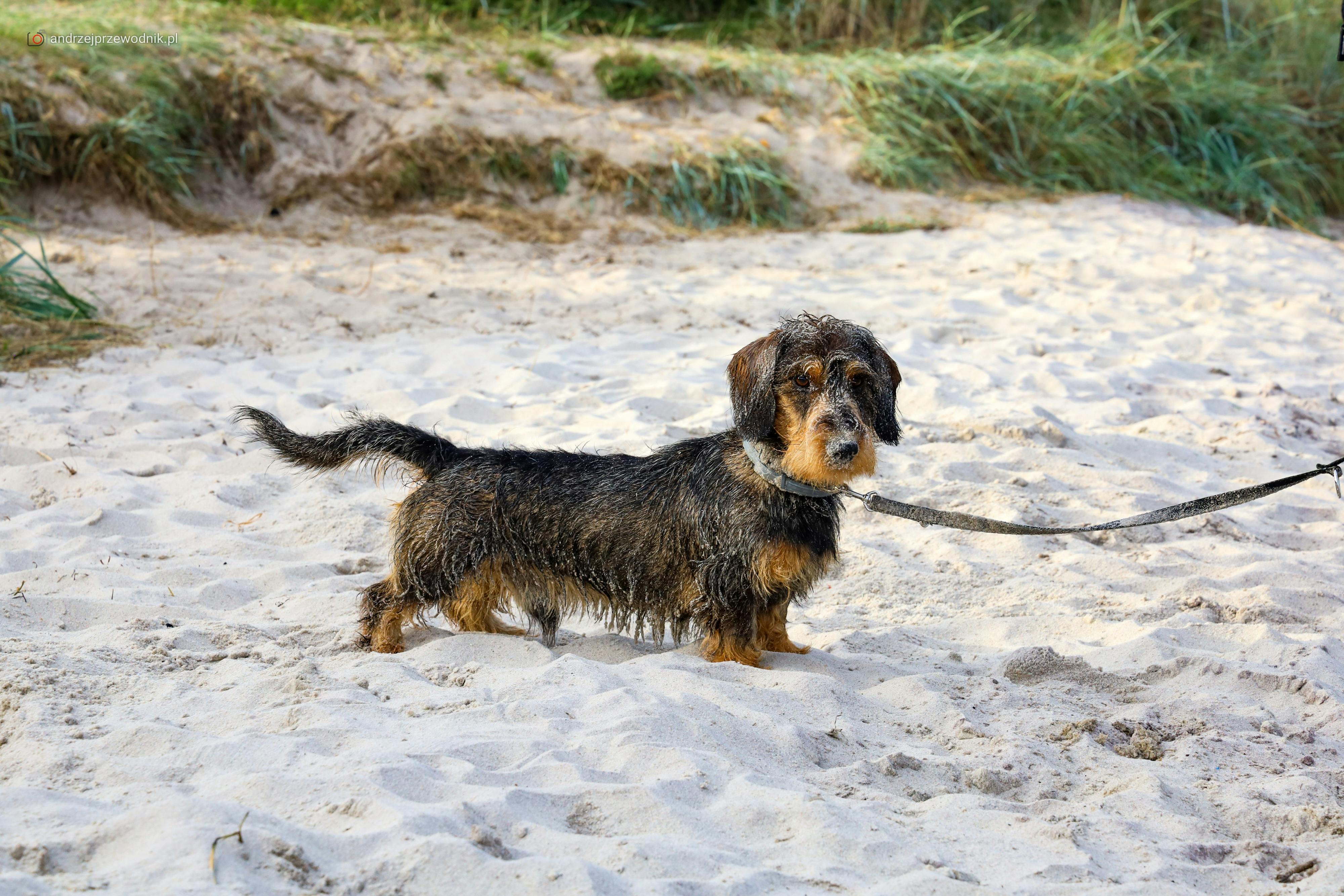
Dogs are often called man’s best friend, but have you ever wondered why they have those wet noses? It’s a question that many pet owners, and even dog lovers, often ask. The truth is, the role of a dog’s nose, particularly its wetness, is fascinating and complex. In this article, we will dive into the reasons behind why do dogs have wet noses and how it relates to their behavior and communication.
Why Are Dog Noses Wet?
Dogs noses are typically wet for several reasons. The moisture on their noses serves important functions. Here’s a quick list of why dog noses are wet:
- Enhanced Smell: The wetness helps trap scent particles, making it easier for dogs to smell things. This is crucial to their perception of the world.
- Temperature Regulation: Dogs cool off through their noses. When they pant, moisture evaporates from their noses, helping to reduce their body temperature.
- Health Indicator: A wet nose often indicates that a dog is healthy. While not always, a dry nose can sometimes suggest dehydration or illness.
The Science Behind the Wet Nose
Dogs have a unique anatomical feature that makes their noses particularly effective. The mucous membrane on the surface of the nose secretes moisture. This moisture then helps in the absorption of scent particles. Interestingly, dogs have an extraordinary sense of smell, estimated to be 10,000 to 100,000 times more sensitive than humans.
Fun Fact: Did you know that bloodhounds can follow scent trails that are days old? Their noses are truly remarkable!
Historical Context of Dog Noses
Historically, dogs have been bred for specific tasks, many of which rely heavily on their sense of smell. For instance:
- Hunting Dogs: Bred to track game, their wet noses help them pick up scents from the ground.
- Rescue Dogs: Used in search and rescue operations, these dogs rely on their noses to find people trapped in debris or lost in wilderness.
- Service Dogs: Some dogs are trained to detect medical conditions like low blood sugar or seizures, showcasing how important their noses are.
Communication Through Nose Contact
Dogs also communicate through their noses. When dogs meet, they often sniff each other’s noses and behinds. This is a way for them to gather information about one another, including age, health, and even emotional state. Here are some common behaviors involving nose interactions:
- Sniffing: A dog may sniff a human or another dog to gather information. It’s their version of asking “Who are you?”
- Licking: Sometimes, dogs lick their owners’ faces or noses. This can be a sign of affection or submission.
- Nose Bumping: Dogs may use their noses to nudge or bump against people or other dogs as a way of initiating play or gaining attention.
Comparing Dog Noses to Human Noses
It’s interesting to compare dog noses to human noses. Here are some key differences:
| Feature | Dog Nose | Human Nose |
|---|---|---|
| Sensitivity | 10,000-100,000x better | Less sensitive |
| Moisture | Wet, helps in smelling | Usually dry |
| Temperature Regulation | Cools body | No significant role |
| Communication | Scent-based interactions | Vocal and visual cues |
Practical Examples of Nose Use
Dogs use their noses for various practical purposes. Here are a few examples:
- Tracking: Bloodhounds can follow a scent trail for miles, thanks to their wet noses.
- Detection: Dogs are employed in airports to sniff out illegal substances or explosives.
- Therapy: Some therapy dogs use their noses to help comfort people in hospitals or nursing homes.
In summary, the wet noses of dogs play a crucial role in their behavior and communication. It’s not just about being cute; there’s a whole science behind it! Understanding why do dogs have wet noses can deepen the bond you have with your furry friend. So, the next time you give your dog a scratch behind the ears, remember that their wet nose is not just a quirky feature — it’s a vital part of their being.
Wet Noses and Dog Breeds: Do Certain Breeds Have Wetter Noses Than Others?
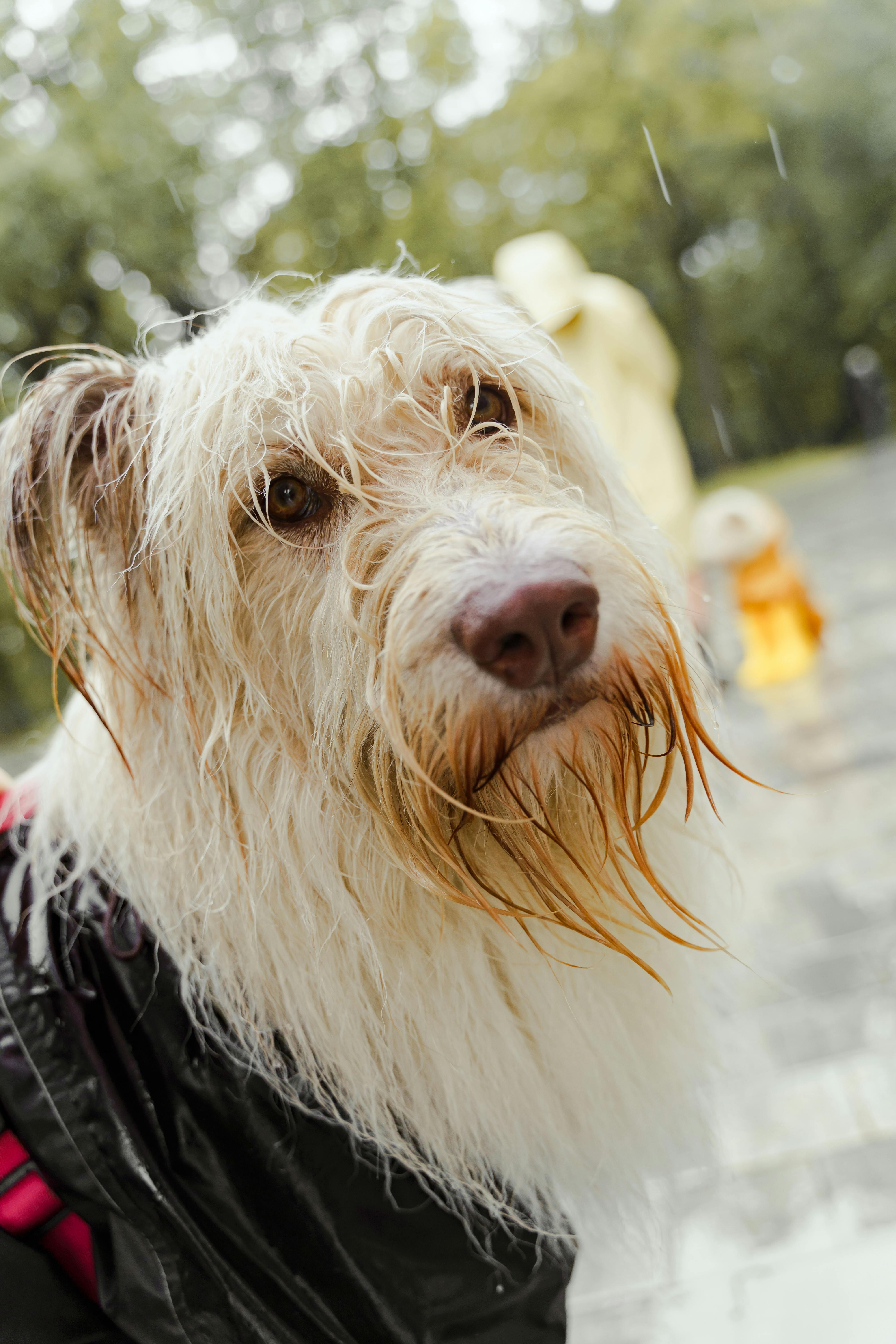
Wet noses are an endearing feature of dogs, but ever wonder why some breeds seem to have wetter noses than others? And why do dogs have wet noses anyway? Digging into these questions provides us with fascinating insights into canine biology and behavior.
Why Do Dogs Have Wet Noses?
Dogs have wet noses for several reasons, and it’s not just because they happen to enjoy splashing in puddles. A dog’s nose is covered in a thin layer of mucus that helps to enhance their sense of smell. The moisture captures scent particles from the environment, allowing dogs to process smells more effectively. This ability is crucial for their survival, as dogs rely heavily on their sense of smell to gather information about their surroundings.
Here are some reasons why dog noses are wet:
- Enhanced Olfactory Function: A wet nose helps absorb scent particles, making it easier for dogs to detect odors.
- Temperature Regulation: Dogs do not sweat like humans. Their noses help to cool them down, especially when they’re overheated.
- Health Indicator: A wet nose can be a sign of a healthy dog, while a dry or cracked nose might indicate dehydration or illness.
Wet Noses and Dog Breeds
Not all dog breeds have the same type of nose. Some breeds appear to have wetter noses than others, and there are a few factors that contribute to this. Let’s break this down a little.
Factors Affecting Nose Moisture
- Breed Characteristics: Certain breeds, like Bloodhounds or Basset Hounds, typically have wetter noses because of their unique anatomy and skin folds that produce more moisture.
- Environment: Dogs living in humid climates might have wetter noses than those in dry areas, simply because of the moisture in the air.
- Health Conditions: As stated earlier, a wet nose can be a sign of health. If a dog is sick or dehydrated, their nose may become dry.
- Activity Level: Dogs that are active and engaged in play often have wetter noses due to increased panting and moisture buildup.
Comparison of Different Breeds
Here’s a quick comparison of a few breeds and their typical nose moisture levels:
- Bloodhound: Known for their incredible sense of smell, bloodhounds tend to have very wet noses.
- Golden Retriever: Generally, they have moderately wet noses, which helps them in their role as family companions.
- Bulldog: Bulldogs often have drier noses, which can be a concern for their health.
- Siberian Husky: These dogs usually have wet noses, as they are quite active and spend time outdoors.
Interesting Facts About Dog Noses
- Dogs have around 300 million scent receptors, compared to humans’ 5 million.
- The wetness of a dog’s nose can change throughout the day based on their activity and environment.
- Puppies are born with dry noses, which typically become wetter as they grow and start to explore their world.
Health Indicators Related to Nose Wetness
Monitoring the moisture of a dog’s nose can provide valuable insights into their health. Here are a few indicators to watch for:
- Wet and Cool: Indicates a healthy dog.
- Warm and Dry: Might suggest illness or dehydration; however, context is important.
- Excessively Wet: Could indicate a nasal infection or other health issues.
Tips for Dog Owners
For dog owners, there are simple ways to keep your pet healthy regarding their nose:
- Hydration: Ensure your dog has constant access to clean, fresh water.
- Regular Vet Check-ups: Regular visits can help catch any potential health issues early.
- Monitor Changes: Keep an eye on changes in your dog’s nose moisture and temperature.
Understanding the reasons behind wet noses in dogs not only brings you closer to your furry friend but also empowers you to take better care of their health. So next time you pet your dog and feel that cool, wet nose, you’ll know there’s much more to it than just cuteness. In every sniff and every play, their noses are working hard to keep them connected to the world around them.
The Role of Environment: How Humidity and Weather Influence Your Dog’s Nose Moisture

Dogs are often seen with their wet noses, and many pet owners wonders why. The moisture on a dog’s nose is not just a quirky feature, but it serves important functions. It’s fascinating how environmental factors like humidity and weather impacts the wetness of a dog’s nose. So, let’s dive into the science of why do dogs have wet noses and how the environment plays a role in it.
The Basics of a Dog’s Nose
A dog’s nose is a highly sensitive organ. The wetness helps to enhance their sense of smell, which is already far superior to humans. Dogs have up to 300 million scent receptors in their noses, while humans only have about 5 million. That’s a big difference! The moisture on their noses helps to capture scent particles from the air, making it easier for them to detect different smells.
- Scent Detection: The wetness allows scent particles to stick better.
- Temperature Regulation: A wet nose also helps to cool a dog down, as dogs do not sweat like humans do.
- Health Indicator: Changes in nose moisture can indicate health issues, like dehydration or illness.
The Weather’s Effect on Nose Moisture
Weather plays a significant role in how wet a dog’s nose is. When the weather is humid, a dog’s nose tends to stay wetter. Here’s why:
- Humidity: High humidity levels in the air means there’s more moisture. So, on a humid day, dogs can absorb more water through their noses.
- Temperature: When it’s hot, dogs may also drool more, which can contribute to a wet nose.
- Cold Weather: In contrast, during cold, dry weather, a dog’s nose can become dry and cracked.
How Do Different Conditions Affect Dogs’ Noses?
Here’s a quick overview of how various weather conditions influences a dog’s nose:
- Hot and Humid Days:
- Nose stays moist.
- Dogs could be more active and playful.
- Cold and Dry Days:
- Nose may become dry.
- Dogs might be less active or show signs of discomfort.
- Rainy Weather:
- Noses typically stay wet.
- Dogs enjoy the fresh scents in the air.
The Science Behind Nose Moisture
So, what actually happens in a dog’s nose? The moisture comes from mucous glands that are located within the nasal passages. When the environment is right, these glands produce a thin layer of mucus. This layer is essential for several reasons:
- Scent Reception: The moisture captures scent particles effectively.
- Thermoregulation: It helps in maintaining a lower body temperature.
- Health Monitoring: Changes in moisture levels can signal health problems, like dehydration or fever.
Interesting Historical Context
Historically, the idea of a dog’s wet nose being healthy has been around for a long time. Ancient cultures recognized that a wet nose often indicated a happy and healthy pet. For example, in Ancient Rome, dogs were often seen as companions, and their health was closely watched. A wet nose was considered a sign of vitality, while a dry nose was often a cause for concern.
Practical Tips for Dog Owners
As a pet owner, it’s important to monitor your dog’s nose moisture. Here are some tips:
- Hydration: Always provide fresh water, especially in hot weather.
- Climate Control: If your dog is indoors, maintain a comfortable humidity level.
- Regular Check-ups: Consult a vet if you notice a persistent dry nose or other changes.
What to Watch For
If you notice changes in your dog’s nose, it could indicate a health issue:
- Dry, Cracked Nose: Could be a sign of dehydration or illness.
- Excessively Wet Nose: Might indicate allergies or an infection.
- Discoloration: Changes in color can be a concern and should be checked by a veterinarian.
Understanding the relationship between a dog’s nose moisture and environmental conditions not only helps in ensuring your furry friend’s health but it also enhances the bond you share. Dogs communicate a lot through their noses, and as an owner, being aware of these factors can make a difference in their well-being. So next time you notice your dog’s wet nose, you’ll know there’s more to it than meets the eye!
Fun Facts About Dog Noses: 8 Incredible Truths You Didn’t Know About Your Furry Friend’s Sniffer

Dogs are one of the most beloved pets worldwide. Their companionship brings joy to millions of families. But have you ever wondered about your dog’s nose? The truth is, it’s more than just a cute feature. There’s a lot going on with those wet little snouts! Let’s explore some fun facts about dog noses that might just blow your mind!
Why Do Dogs Have Wet Noses?
So, why do dogs have wet noses? It’s a common question among pet owners. A wet nose is not just for show; it serves several important purposes.
Enhanced Sense of Smell: A dog’s sense of smell is extraordinary. A wet nose helps to capture scent particles more effectively. This is because moisture helps trap these particles, allowing dogs to process smells better.
Temperature Regulation: Dogs don’t sweat like humans do. Instead, they use their noses to help regulate their body temperature. When a dog’s nose is wet, it can cool down more efficiently.
Health Indicator: The moisture level of a dog’s nose can indicate their health. A wet nose usually means your dog is healthy, while a dry nose could be a sign of dehydration or illness.
Fun Facts About Dog Noses
Let’s dive into some interesting facts that you probably didn’t know about your furry friend’s sniffer!
Unique Nose Prints: Just like human fingerprints, every dog’s nose print is unique. You could say it’s their personal ID. This uniqueness can even be used to identify dogs if needed.
Incredible Sense of Smell: Dogs have around 300 million scent receptors in their noses, compared to a human’s 5 million. This makes their sense of smell anywhere from 10,000 to 100,000 times more acute than ours!
Smell Memory: Dogs have a fantastic memory for smells. They can remember scents for years, which is why they often react excitedly to familiar smells, like that of their favorite toys or people.
Nose Temperature: A dog’s nose temperature can fluctuate. A cold, wet nose is typically considered a sign of a happy, healthy dog. If their nose is warm and dry, it might be time to check in with your vet.
Nose Shape Matters: The shape of a dog’s nose can affect its sense of smell. Breeds with longer noses, like Bloodhounds, generally have a better sense of smell than flatter-faced breeds, such as Bulldogs.
Scent Discrimination: Dogs can differentiate between smells easily. They can even detect specific scents in a mixture, which is why they’re often used in search and rescue missions, or detecting drugs and explosives.
Common Nose Conditions: Some dogs can develop issues with their noses. Conditions like nasal hyperkeratosis can occur, leading to a thickening of the skin on the nose. Regular check-ups with a veterinarian can help maintain your dog’s nose health.
Dogs Can’t Taste Sweetness: Interestingly, dogs have fewer taste buds than humans and they can’t taste sweet flavors. This means their focus is more on smells rather than taste when eating.
Practical Examples and Comparisons
To give you a clearer picture of how amazing dog noses are, let’s compare them with human noses:
Scent Receptors:
- Dogs: Approximately 300 million
- Humans: About 5 million
Scenting Ability:
- Dogs can detect certain substances in parts per trillion.
- Humans struggle to detect scents in parts per million.
Usage in Professions:
- Dogs are used in police work, search and rescue, and even in medical fields to detect diseases.
- Humans rely on machines and technology for these tasks.
Fascinating Nose Trivia
Scent Games: There are many games you can play with your dog to engage their sense of smell. Hiding treats around the house and letting them find it is a fun way to stimulate their mind.
Nose Work Classes: Some pet owners enroll their dogs in nose work classes. These classes help dogs enhance their scent detection skills and provide great mental exercise.
Dog Sniffing Behavior: When dogs sniff each other, they’re gathering information! They can learn about others’ health, diet, and even mood through their noses.
Understanding the importance of your dog’s nose can help you appreciate your furry friend even more. From their unique nose prints to their exceptional smelling abilities, these little snouts play a crucial role in your dog’s life. So next time you see your pup with that adorable wet nose, remember all the incredible things it does!
Conclusion
In conclusion, the wet noses of dogs serve multiple important functions that contribute to their overall health and well-being. We explored how a moist nose enhances a dog’s sense of smell, allowing them to detect scents more effectively due to the moisture that helps capture scent particles. Additionally, a wet nose plays a role in thermoregulation, assisting in cooling down the body during warm weather. While a wet nose is often a sign of a healthy dog, it’s crucial to monitor changes in moisture levels, as they can indicate health issues. Understanding the significance of this unique characteristic can deepen our appreciation for our furry companions. So next time you give your dog a pat and feel that familiar wet nose, remember the remarkable biology behind it. Share this knowledge with fellow dog lovers and foster a greater understanding of our canine friends!

